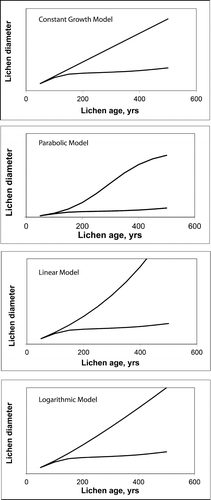Figures & data
FIGURE 2 (A, B) Examples of digital images of lichen thalli, which were traced with image processing software in order to measure their area in mm2 (see Methods). (A) Pseudephebe, (B) Rhizocarpon.
(C, D) Lichen images following georeferencing to determine percent growth. Each pair of images was scaled to be the same size by georeferencing using ArcGIS software using matching mineral grains and cracks in the underlying rock. The older images have been slid aside in this figure to allow before/after comparison of each thallus. The white trace shows the 1980s' thallus outlines superimposed on the newer images. (C) Pseudephebe from the Linnébreen growth station. (D) Rhizocarpon from the Conwaybreen growth station.
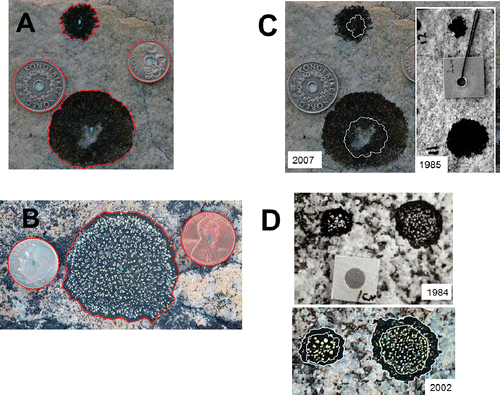
FIGURE 3 Comparison of percent growth of the various lichen thalli determined by the georeferencing approach and the millimeter scaling approach. A best fit line shows very nearly a 1∶1 correspondence between the two measurement approaches.
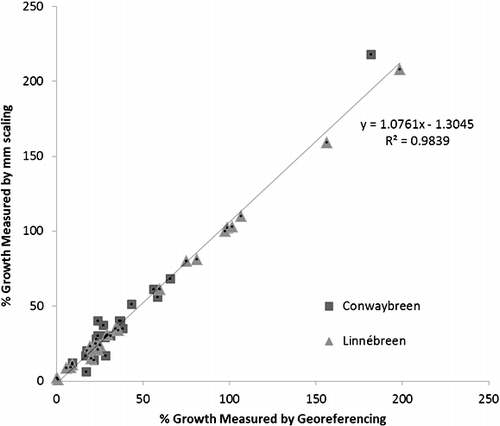
FIGURE 4 Lichen growth “Area-Derived Diameter” (ADD) rates versus starting size. Growth rates were calculated by dividing the change in ADD by the time of the study period (18 yrs for Conwaybreen, 22 for Linnébreen).
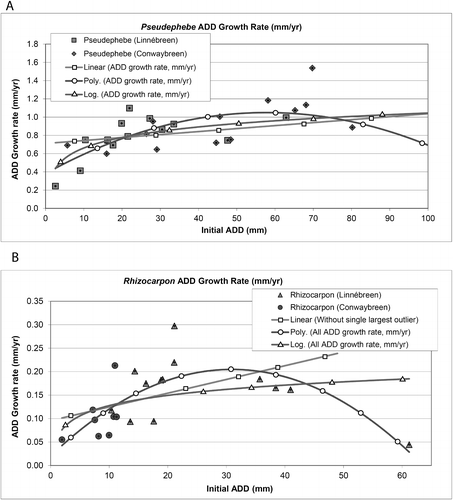
TABLE 1 Size and growth rate data for measured lichen thalli. For all specimens at the Linnébreen growth station, the initial and final measurement years were 1985 and 2007. For the Conwaybreen growth station, the initial and final measurement years were 1984 and 2002. Percent growth and area-derived diameter (ADD) growth rate are calculated over the entire time period (22 years for Linnébreen and 18 years for Conwaybreen).
TABLE 2 Best fit curve parameters and statistics.
FIGURE 5 Comparison of directly measured Rhizocarpon growth rates. CitationBradwell and Armstrong (2007) measured 41 Rhizocarpon section Rhizocarpon thalli for 5 years, CitationBradwell (2010) measured 23 Rhizocarpon section Rhizocarpon for 5 years, and CitationTrenbirth and Matthews (2010) measured 2795 thalli consisting of Rhizocarpon section Rhizocarpon and Rhizocarpon section Alpicola.
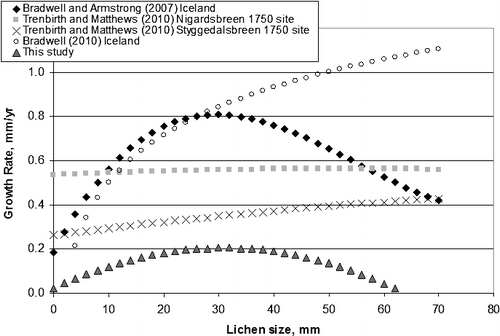
FIGURE 6 Examples of Rhizocarpon long axis growth curves generated by indirect measurements. From CitationWerner (1990).
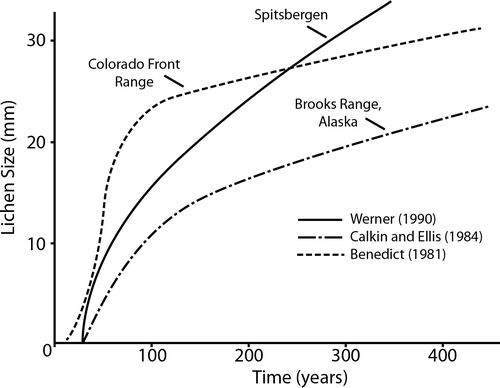
FIGURE 7 Size versus age curves generated for Rhizocarpon by several different growth models based on the direct-measured growth rates. See text for explanation of the models.
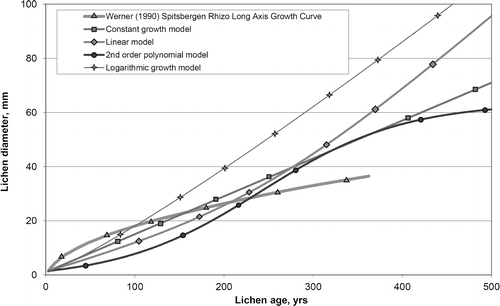
FIGURE 8 Assumed climate-related lichen growth suppression over the past 500 years. Lichen growth suppression is expressed as a reduction in growth rate from the latest 20th century.
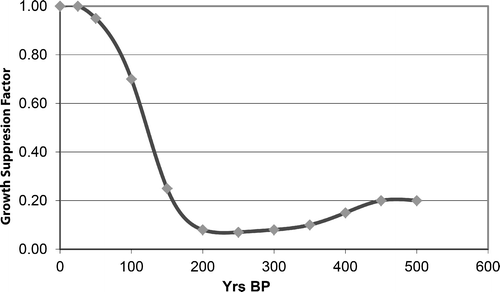
FIGURE 9 Modeled lichen growth showing no growth suppression due to climate change (upper line in each plot) and with assumed growth suppression due to harsher Little Ice Age (LIA) climate.
